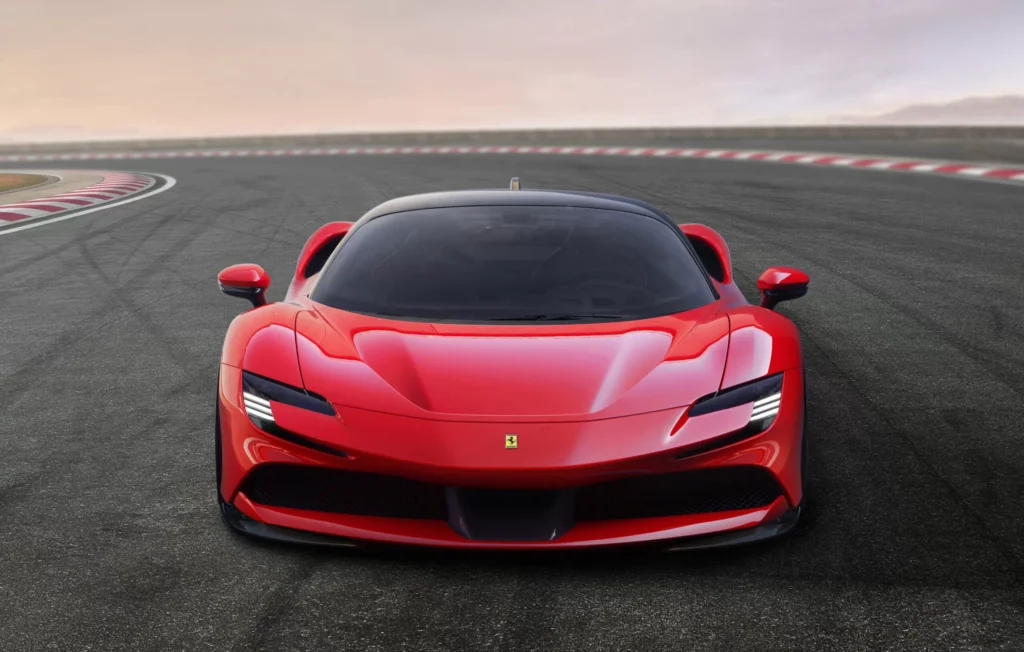Opinion: Ferrari’s Business Model is Breaking
Their exclusivity model is failing, with depreciation increasing and demand slowing, but shifting into a volume manufacturer has its risks.

Ferrari’s former CEO, Sergio Marchionne, said that they would make a Ferrari SUV “over his dead body.” He died a year after that statement, and Ferrari started building their SUV, disclosing their new Purosangue SUV in 2022. The name means ‘purebred’ — which feels like a bad joke — but it has sold incredibly well and remains the only Ferraris to resell well above sticker. It may be the only highly successful product that Ferrari currently makes.
Ferrari is an uncertain place, as the deal they’ve made with customers for the past few decades has stopped working. The deal was that, if customers bought the entry models — like the California roadster — then they’d be in the running to buy the next model up the rung, their V8 supercar — like the F8 Tribuno. Once you buy a few of these, you can buy the V12 model — like the 812 Superfast — and if you buy more of those, you can buy their limited, special edition variants. And only after years and millions in spending, if your dealer likes you, will you have a chance at buying the multi-million dollar, limited edition hypercars, like the LaFerrari.
The deal worked because, though the entry models weren’t desirable, every car beyond it was. You could buy the V8 model, drive it for a while, and sell it for almost the same price you spent on it; and then earn a profit by buying the V12 one, particularly if you sold it within a few years. Earning the right to spend millions on a car may seem highly off-putting — and is to several well-off and famous car collectors, like Jay Leno — but reselling them could earn you enough to make it worth your time. And so, Ferrari pulled off the miracle of relatively high supply whilst still being well below the demand and highly desirable.
But, with their latest generation models, this deal stopped working. California depreciated 7% in its first year, but the Roma lost 16% of its value in the same period. And it’s not as though this affects the entry models alone. It’s even worse the higher up the market you go.

Ferrari’s SF90 was supposed to be an incredible hybrid hypercar, and it left dealers with price tags usually above $700K — or more than $800K with more lavish opinions. But car reviewers criticized the soulless hybrid driving experience, fans weren’t enamored with the looks, and it wasn’t a limited production, so it wasn’t that rare either. And then, shortly after, Ferrari replaced the F8 Tributo with the 296 GTB. It may have used a V6 instead of a V8, but it was also a hybrid supercar with similar power to the SF90 for a base price of roughly $350K. Oh, and it drove better, sending all its power to the rear wheels, and it looked better.
And so, despite being a supposedly special, new Ferrari, low-mile SF90s sell for around $500K. In a year, they’ll sell for under $400K; or less than a slightly optioned 296 GTB.
The whole allocation model had started to break. In the past, you needed a long history with Ferrari to buy their top-end V12 model; but 12Cilindris are available for any first-time Ferrari buyer who has half a million to spend. Even more jarring is that take-up on their $3.9M F80 hypercar was slower than expected. According to Ferrari, all 799 units were instantly sold out, but it’s widely known that several Ferrari collectors backed out of their allocations, unconvinced by the investment opportunity here, particularly given the incredible price tag and underwhelming looks. Ferrari is also infamous for fudging the production numbers of its “limited” runs, and that’s before they announce an F80 Spider, which is inevitable.
The exclusivity model no longer works for Ferrari; instead, like Porsche, they have to shift into volume production, keeping exclusivity only for the highest-end, enthusiast model. For example, the Purosangue is highly desirable because Ferrari has restricted their annual production volume and only produces it with a naturally aspirated V12. But it’s only a matter of time before the 296’s hybrid V6 slides into that engine bay and the volume cap lifts.
And if that weren’t enough, Ferrari has announced that they will reveal their first all-electric model — a crossover — on October 9th. It will be expensive, powerful, and made without any sales limitations, and expect Ferrari to push this heavily for the Chinese market, where Ferrari isn’t as well known, and electric cars are more desirable.
Will this move to volume work? It has for Porsche, whose GT division makes the most desirable enthusiast sportscars on the road and can do so because their parent company sells Cayenne and Macan SUVs. But this is a tricky position to be in. The more you see the Prancing Horse, the less special it will seem. Without careful management, Ferrari could become the next Maserati.

